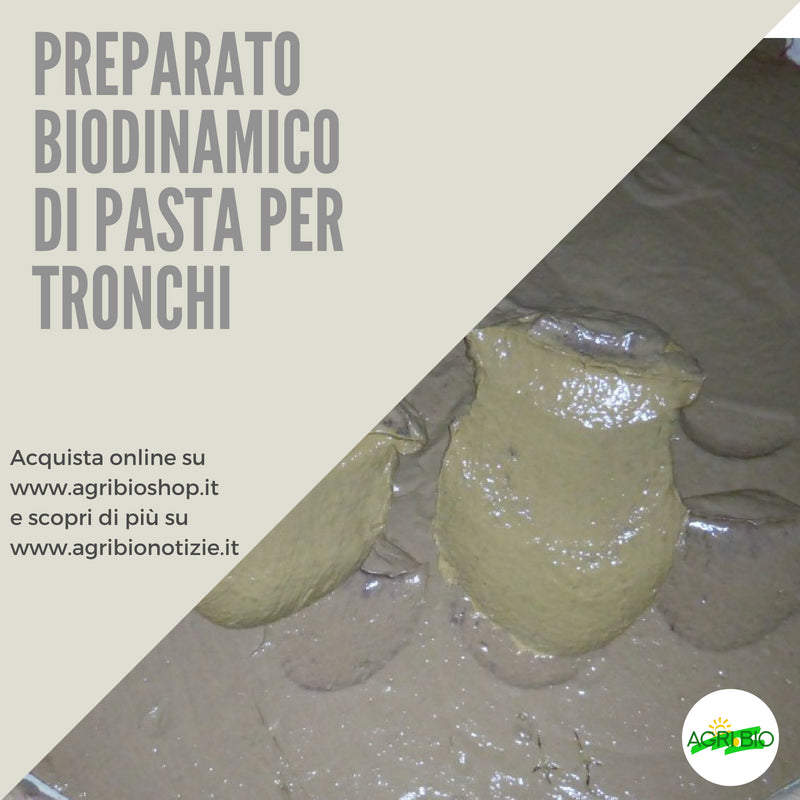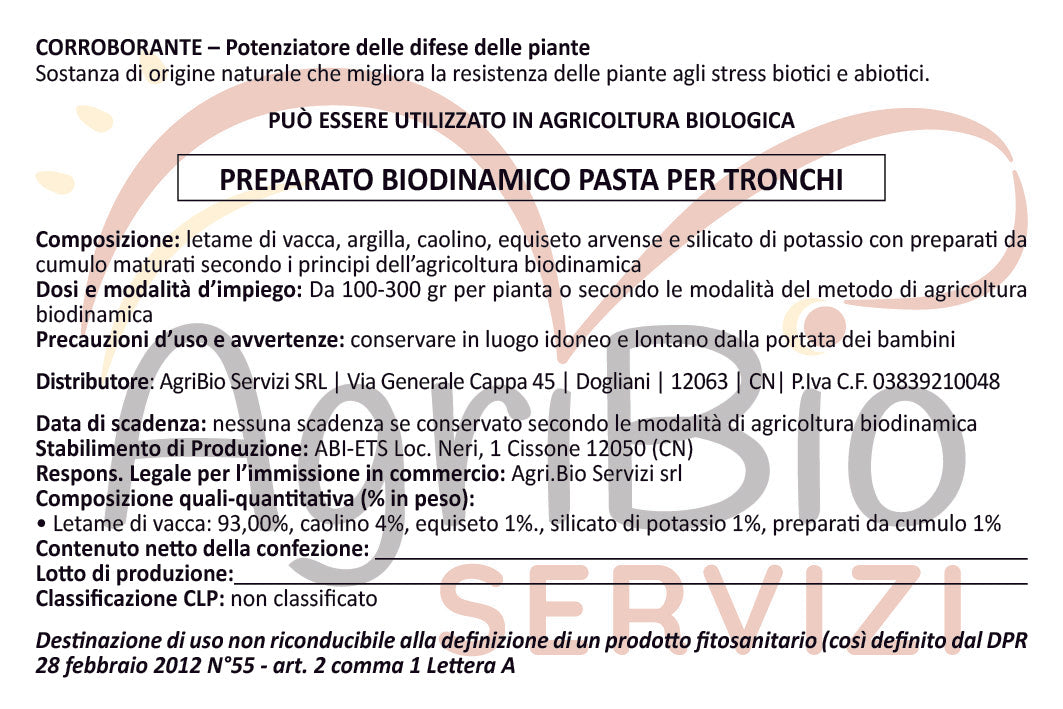PASTE FOR LOGS
Have a question?


PASTE FOR LOGS
Dettagli
AGRIBIODYNAMIC PASTE FOR LOGS
AgriBioDinamica Log Paste is a great balancer of the wood, it nourishes and protects it and stimulates the circulation of the exchange: in fact it is a cornolet for the wood, given that as R. Steiner says in the Koberwitz Course "wood is a root common of undifferentiated gems”.
The best period of use is in late autumn-winter, after the start of the leaves falling (October - March), but if necessary it can also be used in other periods.
For family orchards it is advisable to clean the trunk with a brush before brushing the paste.
Always do this work on sunny days so that the paste dries well on the trunk, and the action will last for several months.
Also to be used for wounds on the trunk or after heavy pruning to spread on the wounded part.
In case of transplants, especially late ones, it helps the exchange to resume its natural function
It is useful to use it every year: it guarantees rejuvenation and nourishment of the exchange
Basic recipe for the preparation
-
75 kg fresh cow manure also mixed with organic humus
-
12 kg very fine silica (river) sand or kaolin
-
25 kg very fine bentonite
-
25 kg very fine clinoptilotite zeolite
-
10 kg of very fine basalt
-
5 liters horsetail decoction (500 gr. powdered horsetail in 5 - 8 liters of water boiled for one hour)
-
3.5 kg of potassium silicate
-
spring or well water
-
3 doses of biodynamic cumulation preparations (502, 503, 504, 505, 506, 507)
-
2 doses of dynamized cornolet together for an hour with the 3 doses of heap preparations and then mixed with the log paste
Mix everything well until you obtain a liquid paste (like giving color to the walls at home) possibly with a shovel or better yet a good immersion drill for paints. Leave to rest for at least 24 hours (it is necessary for the bentonite to absorb the water well), if it is too dry add water and then brush on the trunk of the plant starting from the collar up to the first branches.
Spread the paste with the dry and clean trunk on a day when imminent rain is not forecast (at least 6-8 hours) with a brush over the entire trunk from the collar to a height of approximately 1.60 cm.
Very useful to use even during the year for weak, sick or old plants with poor vitality problems, transplanted at the wrong times, usable in every month of the year; preferably in the ascendant Moon or 2/3 days before the Full Moon.
To be used all year round for weak, diseased or transplanted plants at unsuitable times.
If you have any left over, keep it closed (not airtight) in a dark, cool place, and if it dries too much, add water (non-chlorinated) and mix well before using it again. You can also use it the following autumn: it can last over a year.
In the case of large plots of fruit orchards or vineyards, dilute the product 1:10 in water, filter it and use an atomizer for spraying in the quantity needed: from 300 to 600 liters per hectare
-
If you want to make a log paste that intensifies vegetative strength (SAL), increase the manure and decrease the silica (kaolin)
-
If you want to strengthen the floral pole (SULPHUR), increase the kaolin or silica and reduce the manure.
-
Bentonite can be added in case of too liquid paste, it stimulates lymph circulation (MERCUR)
CAUTION: Since there is also fresh manure in the log paste, it can ferment, and therefore keep the lid closed but never hermetically sealed, so that it can vent during fermentation




